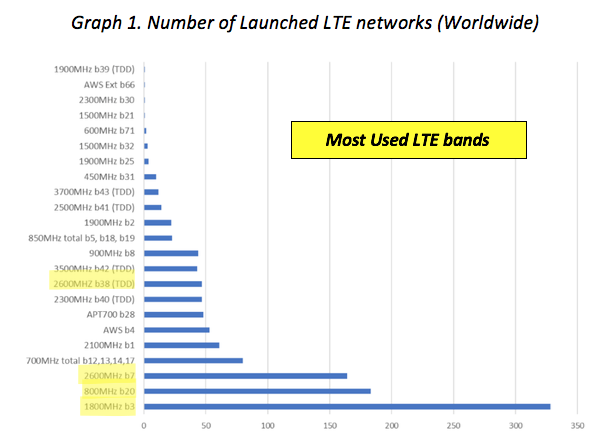Mining industry demands wireless networks with high-availability, seamless mobility with world-class Quality of Service (QoS), improved security, and the ability to support multiple applications and services simultaneously. A private LTE network is becoming an emerging solution to meet these requirements
To build a private LTE network in the mining sector, the choice of spectrum is more critical and complicated in addition to network equipment and IoT devices.
There are several spectrum options available to private LTE network operation: licensed spectrum or unlicensed frequency bands. We will discuss licensed spectrum in this blog.
Licensed Bands:
The licensed spectrum includes the commercial mobile spectrum bands for 4G LTE networks with access depending upon local frequency regulations. Each country has different licensing rules and regulations. Furthermore, according to the report from GSA (Global mobile Suppliers Association) in April 2019, LTE networks have been deployed in 38 licensed frequency bands worldwide. The four most-used bands are 1800 MHz (band 3), 800 MHz (band 20), 2600 MHz (band 7), and 700 MHz.

900 MHz band
Moreover, spectrum regulation in the 900 MHz (3GPP Band 8) in the US region is an emerging possibility that could support private LTE networks in addition to private two-way radio and SCADA radio systems. According to pdvWireless Inc., the FCC has adopted a notice of proposed rulemaking that would allow a broadband allocation at 900 MHz, reconfiguring the band from its current narrowband-only allocation. Licensing and operating rules for the broadband services on this spectrum have not been finalized yet, but generally could be regulated with like broadband services under Part 27 of the FCC rules, miscellaneous wireless communications services (WCS). Recent rule changes allow licensees in such services to identify themselves as either common carriers or private carriers, depending on their operations, and the other regulatory obligations appear reasonable. Networks using lower frequency bands require fewer towers because of better signal propagation.
The challenge can be gaining access to spectrum. In many countries around the world, spectrum is owned and controlled by either large companies or governments. Therefore, the use of this spectrum will require negotiating lease agreements and paying recurring fees to the owner of the spectrum. Depending on the location (remote or urban) will usually dictate whether access will be granted and the amount of fees to be charged. No matter where in the world one operates, the spectrum challenge must be managed and, needless to say, demand is constantly growing. The good news is technology is also advancing.
Please feel free to contact us at Sales@knsdenver.com if you would like to find out more.
